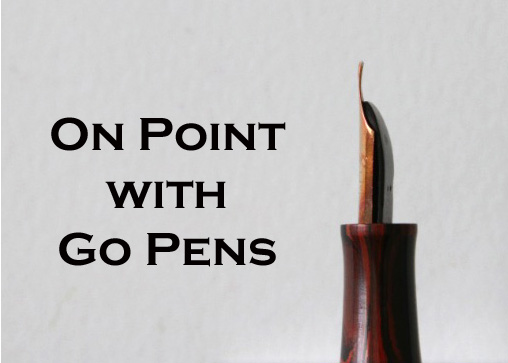
We wrote about the scissor barrel configuration some time ago, but here we have an actual 1945 Colorado double-barreled, double nibbed piston-filling scissor barrel vintage pen. This model is in the Red Laminated finish, with red dot and white dots on the gripping sections so you can identify your inks. The scissor swivels to allow the user to fill each of the two reservoirs separately, so you can have two different inks. The pen is …



